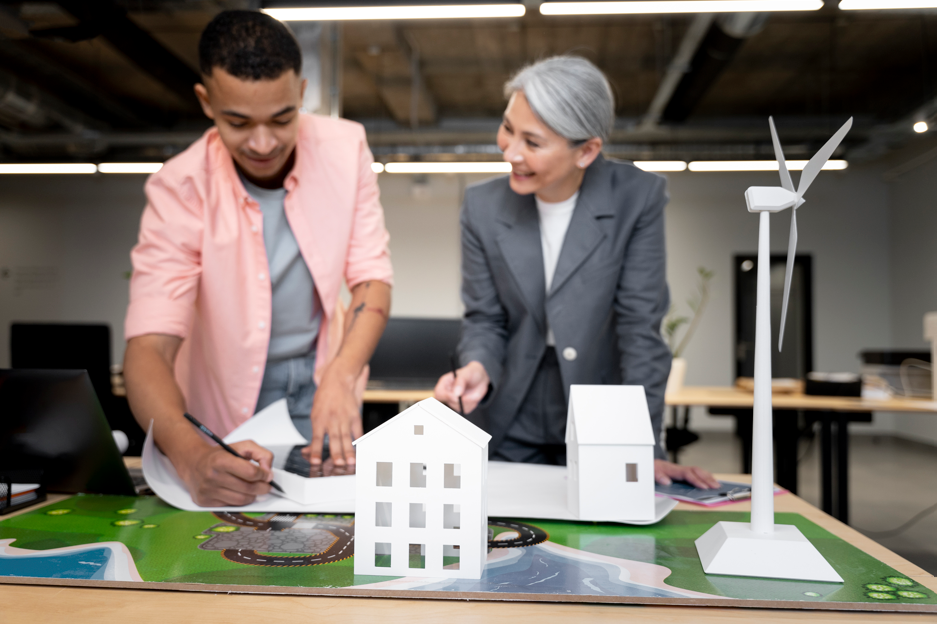The Power of Green Building Passports in Reducing Carbon Footprints
5 Mins Read
Published on: 26 August 2024
Last Updated on: 16 September 2024

toc impalement
The rise in the adverse effects of global warming has attracted the attention of corporations and individuals globally. The construction sector is seeing a refreshing change in the use of sustainable methods for new establishments. This is where green building passports come in – this certification helps take climate preservation efforts to the next level.
This translates to necessary attention on the climate issues from across the world compared to a handful of people. This is a positive sign of the global effort that’s being made towards climate change.
The following sections will explore the different aspects of green building passports, including the benefits and standards that must be met. Check out the following sections to make a difference today!
The Carbon Footprint of Buildings
Buildings are establishments that can be used for housing or commercial usage. Since the inception of building construction, there has been a significant rise in climate issues due to anthropocentric activities.
Thus, the use of traditional building materials such as cement, bricks, steel, and others has increased the carbon footprint. 28% of the global carbon emissions are due to buildings, whereas most are due to inefficient appliances. The main culprit has been the energy use for cooling, heating, and lighting.
With the steep rise in population and technology, there has also been a rise in the construction of buildings – leading to a concrete jungle. Thus, reducing the carbon footprint of buildings is essential to combating climate change.
What are Green Building Passports?
A green building passports is an analysis of the building’s footprint or performance from the perspective of sustainability. This passport holds detailed information on the building’s energy performance, its material use, and its environmental impact.
This green passport serves as a comprehensive record that can help manage the building’s carbon footprint throughout its lifecycle.
Features of green building passports include:
The following are the features of green building passports, check out the list:
Energy Consumption Data: Tracks energy usage and identifies areas for improvement.
Material Information: Records the carbon footprint of materials used, enabling more sustainable choices in construction and renovation.
Compliance Monitoring: Ensures buildings meet environmental regulations and are prepared for future changes.
Benefits of Building Passports
Optimized Energy Use
By providing detailed data on energy consumption, building passports enables property managers to implement targeted energy-saving measures.
Sustainable Renovations
The information in a building passport helps select low-carbon materials for renovations, reducing embodied carbon.
Regulatory Preparedness
Building passports ensure that properties comply with environmental regulations and are ready for future requirements.
Data and Examples
A Global Alliance for Buildings and Construction report highlights that improving energy efficiency in buildings could reduce global carbon emissions by up to 30% by 2030. Building passports can be crucial in achieving this reduction by providing the data needed to implement energy-saving measures.
In the Netherlands, the introduction of building passports has led to a 20% reduction in energy use in public buildings within five years. Similarly, in Denmark, building passports has been instrumental in reducing the carbon intensity of new constructions by 25%.
Standards to Maintain for Green Building Passports
The following standards are necessary for green building passports. Check out the following list to ensure your building adheres to these:
The building has a sustainable design
Buildings nowadays are designed with sustainability in mind, with environmentally-conscious architects and engineers joining the construction sector. So, it would be helpful to have a building design that meets this requirement.
If you are trying to get a passport for a new building before it is constructed – you can discuss a sustainable design with your architect. However, if you are trying to get a green building passport for an already established and in-use building, you must contact an official who can help you with the process.
Something that you can check for yourself is whether your building meets the sustainable development goals. For instance, the building you are trying to get the green building passport for should not disturb the surrounding environment.
Energy-efficient building
The building you are trying to get a green building passport should not have an energy-depleting system. This is one of the essential things to consider when applying for a green building passport.
The building should have a lot of natural light and use renewable energy sources such as solar panels or chargeable lights. This is easy to install if you are applying for the green building passport for an old establishment.
Another way you can ensure the establishment is energy efficient is by using smart appliances with a 5-star rating.
Efficient water usage
To receive a green building passport, your building should make efficient use of water that does not cause a lot of water wastage. You can consider installing a water harvesting system that makes good use of rainwater and even the water used.
Another way in which you can ensure water usage standards are met is by introducing a system that helps reuse treated water. This is important to ensure that the surrounding hydrological resources are cared for.
Non-renewable resources are efficiently used.
Apart from ensuring that renewable energy sources are used, you should ensure that the building does not rely on non-renewable energy resources. The sustainable development goals rely on preserving non-renewable resources as they often contribute to global warming.
Check the following for your building:
- Non-renewable resources are used minimally
- recyclable, eco-friendly resources are used for building construction in case of a new establishment or renovation
These are some of the standards that must be met for your establishment to receive a green building passport.
Conclusion
Building passports is a powerful tool in the fight against climate change. By providing a detailed and transparent record of a building’s carbon footprint, these passports enable property owners and managers to make informed decisions that reduce carbon emissions, enhance sustainability, and future-proof assets.
As climate regulations tighten and the demand for green buildings increases, building passports are set to play a pivotal role in the future of real estate.
You May Like Also:


















Comments Are Closed For This Article